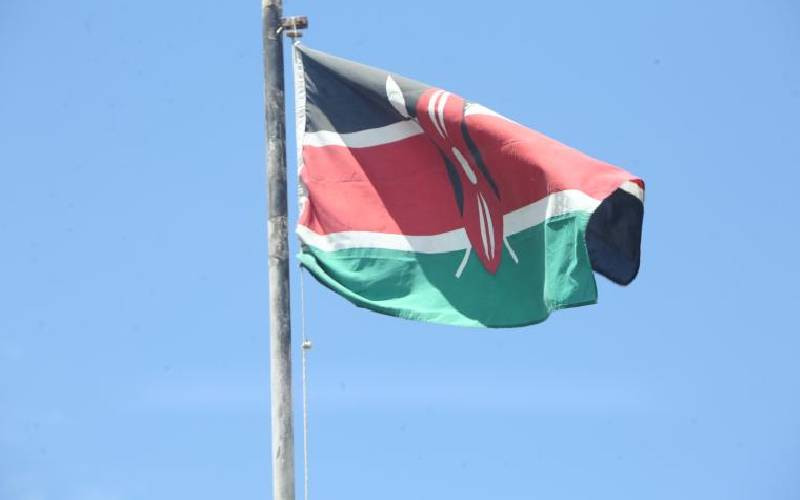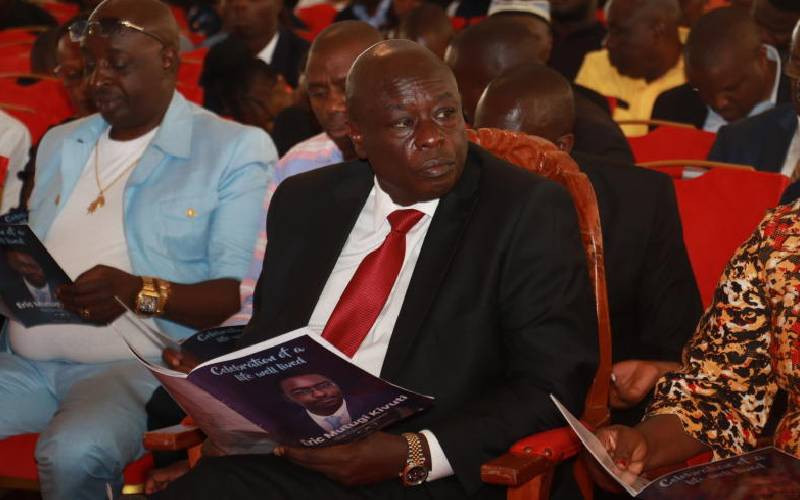
Towards the end of the 17th century, Kumale Lemontaka, a moran from the Purko clan, relocated from his home in Laikipia and settled in Kiambu. As a sign of assimilation into the host Kikuyu community, the young man was nicknamed Hinga and acquired a bride from the home of Chief Gatheca wa Gakenia.
In a classic African fairy tale ending, Hinga acquired a lot of land, married many wives and was blessed with many children. To crown it all, his first son Waiyaki rose to be a leader of Kikuyus in southern Kiambu.
According to historians, Kumale's assimilation into the Kikuyu tribe was common in pre-colonial Africa such that many ethnic groups in Kenya are today highly hybridised. Examples of Kenyan ethnic groupings that originated from such interactions are the Kikuyus who are a mixture of Gumba, Maasai, Athi and the Okiek. Other groups that evolved from similar ethnic interactions are Maasai, Samburu, Abagusii, Abakuria, Oromo, Somalis, Mijikenda, Meru, Akamba and Taitas.
Sociologist and other very clever people will tell you that various factors were responsible for this ethnic construction. Before colonisation, inter-breeding between communities resulted from interaction of various groups who roamed the Kenyan landscape in search of pasture and food.
Tribal migrations only came to a stop after the colonial government created regional entities for ease of administration. The consequence of this ring-fencing of communities was to create our contemporary regional ethnic dispersion.
Despite colonial ring-fencing of communities, historical evidence shows that construction of new ethnic entities did not end with these administrative restrictions. Examples of recent ethnic constructions are the Luhyas, who before colonialism existed as separate subgroups comprising the Maragoli, Wanga, Bukusu and Banyole. Others like the Kalenjin were until 1940s still referred to as Nandi speaking people comprising the Kipsigis, Nandi, Tugen, Keiyo, Pokot, Marakwet, Saboat and Teriki.
The primary drivers of ethnic construction in post-colonial administrative edict have been politics and modernisation. Just like the perennial clamour to unite the Luhya nation acquires impetus during the election period, Kalenjin tribe was a product of the coming together of different Nandi speaking subgroups in the late 40s in order to strengthen their political power. Other recent political ethnic constructions have included attempts to form a Kamatusa identity by bringing together the Kalenjin, Maasai, Turkana and Samburu. The construction of the GEMA community or "People of the mountain" is the new identity work in progress.
Apart from politics, industrialisation and urbanisation have also been important catalysts for creating new identities. Due to changing social economic factors, people from rural areas migrating into towns are creating new identities that do not correspond to rural "tribal groups".
Urbanisation and industrialisation is influencing ethnic identities by bringing together diverse ethnic and racial groups under new political and economic systems. The effects of these modern factors manifest themselves through the ongoing evolution of an urban sheng speaking 'tribe' that is quite distinct from rural "tribal groupings".
My opposition to the proposal to create an additional five counties is informed by this historical background. According to a bill sponsored by Kuria East MP Marwa Kitayama, Kenyans should increase the present 47 counties by five to include Kuria, Teso, Mount Elgon, East Pokot and Mwingi.
My fear is that, such ring fencing of ethnic groups into counties will have the same effect on Kenyan identities as the colonial edict that restricted communities to regional settlement. Not only does fragmentation of Kenya into ethnic counties inhibits the growth of an overarching national identity, it reifies and entrenches our ethnic cleavages.
Having said that, I appreciate the reasons informing Mr Kitayama's proposed bill. Since we already have 47 ethnic counties, it is only fair to accede to additional counties to cater for the interest of the communities that do not have a county to call their own. In a country where funds to communities are channeled through counties, denying any ethnic group to form a county is tantamount to depriving them means for economic development.
While the thinking by the Kuria East MP is understandable, for me fragmenting the nation into additional ethnic counties is not tenable. My view is that, if we are to mess around with county boundaries, we should reduce the number to the eight provinces that existed before devolution.
Not only does it remove charges of economic discrimination, it eliminates the necessity of continuing to fragment the nation into ethnic enclaves while simultaneously sowing seeds of conflict.
Stay informed. Subscribe to our newsletter
As our history of ethnic construction illustrates what we need is to build and nurture a strong Kenyan identity instead of fragmenting what we have. From both economic and political perspectives, the fragmentation of Kenya into small ethnic counties undermines the growth of nationalism and economic prosperity.
Sixty years after independence we cannot continue using traditional and religious myths of ethnic origin to inform political and economic decisions.
 The Standard Group Plc is a
multi-media organization with investments in media platforms spanning newspaper
print operations, television, radio broadcasting, digital and online services. The
Standard Group is recognized as a leading multi-media house in Kenya with a key
influence in matters of national and international interest.
The Standard Group Plc is a
multi-media organization with investments in media platforms spanning newspaper
print operations, television, radio broadcasting, digital and online services. The
Standard Group is recognized as a leading multi-media house in Kenya with a key
influence in matters of national and international interest.
 The Standard Group Plc is a
multi-media organization with investments in media platforms spanning newspaper
print operations, television, radio broadcasting, digital and online services. The
Standard Group is recognized as a leading multi-media house in Kenya with a key
influence in matters of national and international interest.
The Standard Group Plc is a
multi-media organization with investments in media platforms spanning newspaper
print operations, television, radio broadcasting, digital and online services. The
Standard Group is recognized as a leading multi-media house in Kenya with a key
influence in matters of national and international interest.






